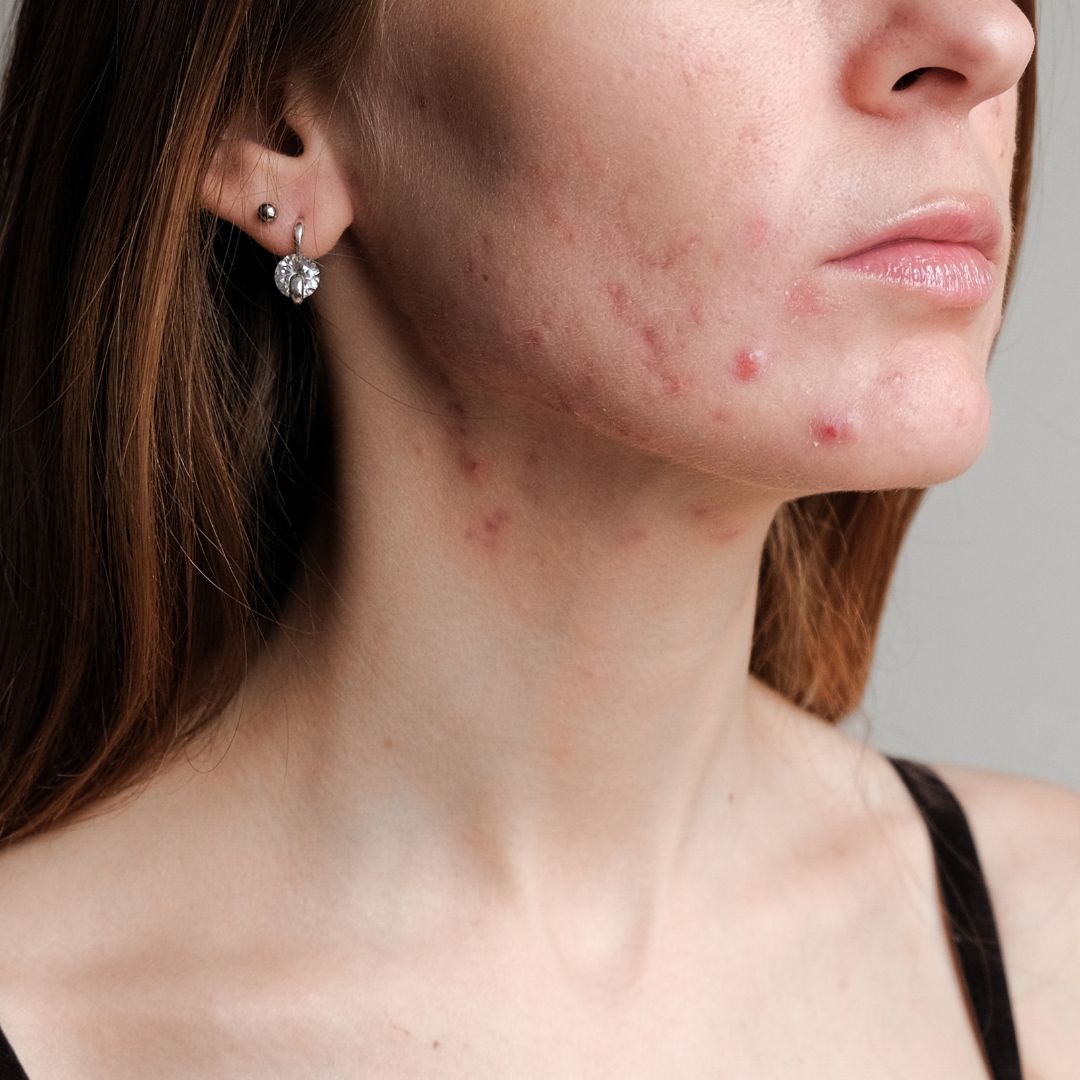
Why do we get acne with PCOS?
In a UK-based study, over 50% of women with PCOS reported experiencing acne, and highlighting its effect on their overall wellbeing. This compares to only 21% of British women without PCOS stating that they suffer with acne.
If you have PCOS, this might not be coming as much of a surprise to you! So, why do we women with PCOS suffer more with our skin than the average British woman?
This comes down to our hormone balance again. PCOS is an endocrine (hormonal) condition, and we see that most women with PCOS have higher androgen (or ‘male’ hormone) levels than women without PCOS.
The higher androgen levels in PCOS can stimulate overproduction of sebum in the skin which can clog pores causing spots to form. Additionally, the low-grade inflammation consistent with PCOS can make the acne worse and more painful, sometimes turning into cystic acne, the type of acne that causes deep, painful bumps. It also tends to flare up when stress is involved, or around the time of our periods.
PCOS-related acne is often found in areas of the body that are more androgen-sensitive, such as around the jawline, chin, chest, and back. This is because these areas have a higher density of androgen receptors, which respond to the higher levels of androgens more intensely. This leads to excess sebum production, as well as increased keratin production in the skin, which can clog pores and foster acne. The back and chest are particularly rich in oil glands, hence why those areas can be especially problematic.
The good news is that any of the dietary changes you make with your PCOS to help reduce androgens will then, in turn, help reduce the prevalence of acne that you’re suffering with.
Check out my blog about how to eat healthily for your skin. And, if you’d like to chat further, why not book a call? One of our one-to-one targeted programmes could be right for you.